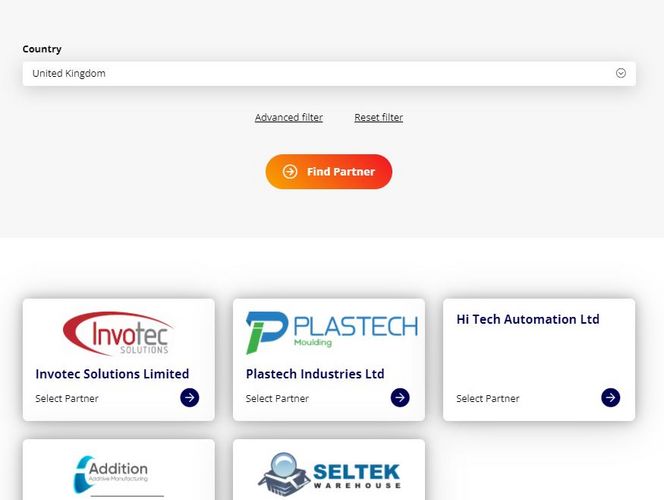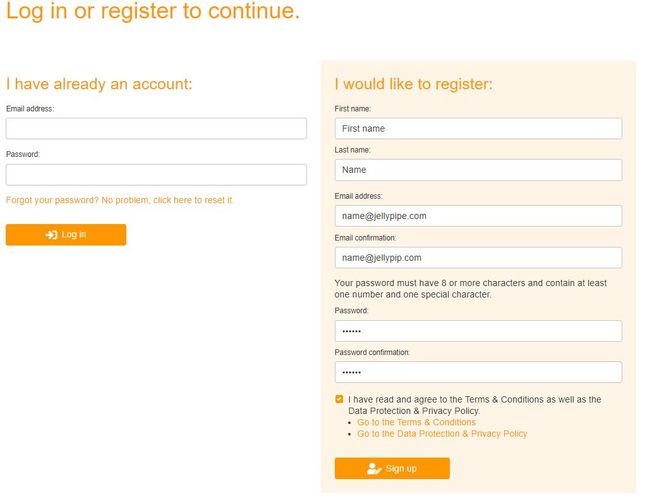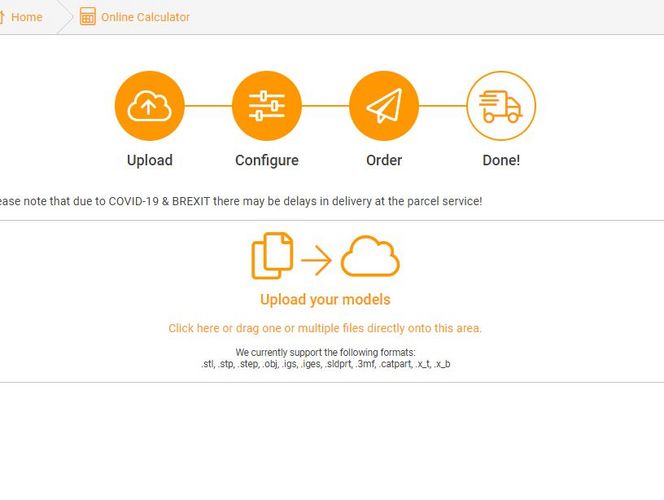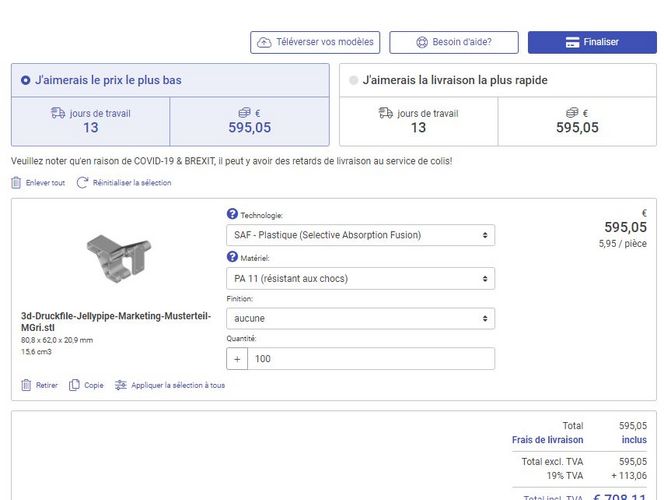What are you looking for?
- Binder Jetting (BJ)
- Digital Light Processing (DLP)
- Direct Metal Printing (DMP)
- Fused Deposition Modeling (FDM) plastic
- Fused Deposition Modeling (FDM) metal
- Investment casting
- Multi Jet Fusion (MJF)
- Multi Jet Modeling (MJM)
- Selective Absorption Fusion (SAF)
- Selective Laser Melting (SLM)
- Selective Laser Sintering (SLS)
- Stereolithography SLA
- Vacuum Casting (VC)





